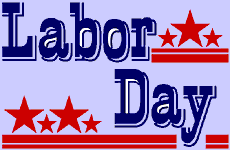
"For most of us, Labor Day means backyard barbecues, weekend sales, and a last carefree day before school starts. But the laid-back holiday has some seriously sad history, including chaos, riots, and even death. Let us explain.
A tragic tale
Back in the days of the Industrial Revolution, workers were expected to put in 12-hour days, seven days a week (yes, including kids). Already sounds awful, right? It gets worse. In Pullman, Illinois, a company town that employed and housed workers to build posh railway cars, times had gotten tough. In response, George Pullman cut jobs and wages. It was 1893. Thousands of workers walked off their jobs in protest, demanding higher salaries and lower rents. Other unions joined, refusing to work the Pullman cars, turning the small-town fracas into a national fury.
With mail cars backing up, and riots worrying train execs, President Grover Cleveland stepped in. He declared the strike illegal and sent 12,000 troops to break the strike. Cue brutal protests and bloodshed. The strike was broken, but so was the spirit of the workers. To reach out to the labor movement, Congress rushed the national holiday into law. The bad will resulted in Cleveland losing re-election. But the day off for hot dogs endures.
When is it?
Labor Day falls on the first Monday of September. This year, that would be Monday, September 7. According to the Department of Labor, Congress passed an act in 1894 making the first Monday in September of each year a legal holiday.
So, working stiffs everywhere, say it now, with feeling: Happy Labor Day."
The Sad Story Behind Labor Day
by Claudine Zap
Sep 4, 2009

